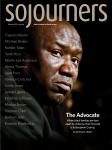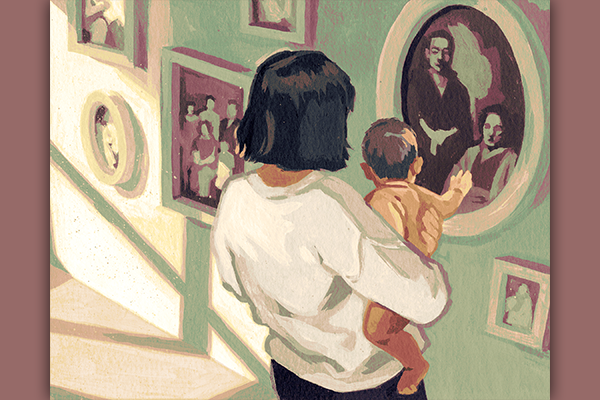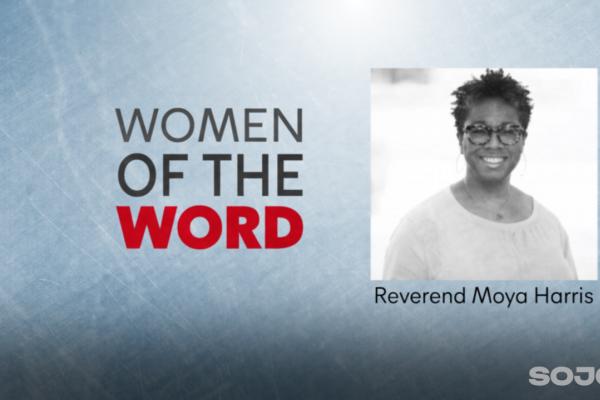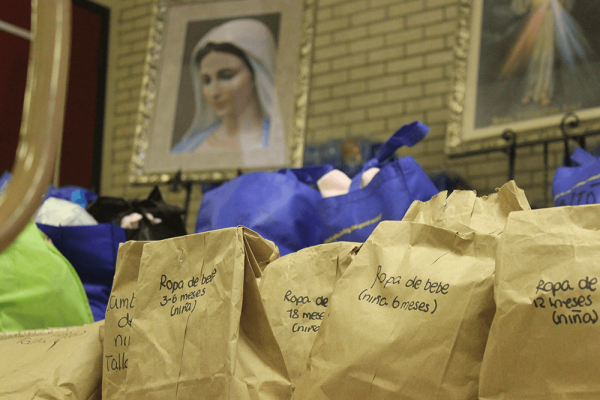I GREW UP IN LONDON, Ontario, a small city west of Toronto. As an immigrant, my dad wanted to make sure that his daughters grew up with an accurate understanding of Western culture, so he acculturated us to this strangely foreign world by taking us to non-Korean church services throughout the week. After our regular Korean Presbyterian Church’s Sunday service, he took us to a Sunday night Baptist service, a Wednesday night Baptist service, and a Friday night Missionary Alliance Bible study and youth group. Church also served as a free source of English lessons for me and my sister.
My parents loved to go into Toronto and Detroit to attend revival services. These revivals were out-of-this-world experiences, and at times they frightened me. I saw things that I had never seen in any other church visits, and it was during these services that I first witnessed the effects of the Holy Spirit.
My early experiences of the revivals involved adults gathered in the sanctuary for hours, and the only hint as to what they were doing was the eerie muffled sounds of their yelling, laughing, shouting, screaming, and crying. One day, as I tell in my 2018 book The Homebrewed Christianity Guide to the Holy Spirit, my curiosity got the better of me. I naively peeked inside the room. What I saw was a jarring scene of the adults in frenzied states of devotion. Some threw their arms up, with tears streaming down their faces, praying and crying out to God. Some people lay on the floor weeping and shaking uncontrollably. I saw my mother, illuminated in the yellow sanctuary light—she stood upright with her hands high above her head, eyes closed and tears rolling down her face as she spoke in tongues.
This was my earliest encounter with the fruits of the Holy Spirit. Due to the inconsistencies of what I saw and my fear, I didn’t do much to explore the Spirit for much of my life, until I started teaching theology and encountering people of various backgrounds, ethnicities, and religions. As I listened to them, I reflected on my own background—my Asian culture, religion, and heritage. I believe that knowing one’s own culture and heritage is imperative to understand the religious landscape in a globalizing world where cultures clash, immigrants come together, and refugees seek new homes away from home.
Asians comprise 60 percent of the world’s population. Major world religions such as Hinduism, Confucianism, Taoism, Buddhism, Jainism, Christianity, and Sikhism were born in Asia. But Christianity soon became Eurocentric, influenced by Greco-Roman philosophy. Today, as Christians grapple with faith in a globalizing world, it may be helpful to see if Asian culture can bring some insights into the Western Eurocentric portrayal of the Holy Spirit.
People who speak multiple languages can attest to how different languages give deeper insight to our concepts and experiences. The five Asian words and concepts that follow can help us enrich and reimagine the Western understanding of the Holy Spirit.
Chi
Asians have always had a sense of spirituality and an understanding of the Spirit world, long before European missionaries came to share the good news. One Asian term used to depict Spirit is Chi. It has the same meaning as the Old Testament ruach and the New Testament pneuma—wind, breath, and life-giving Spirit—but it gives a more embodied sense of the Spirit, which is sometimes lost in Western understanding. In Eurocentric Christianity, the Spirit is often portrayed as “out there,” philosophical and disembodied. Chi helps us understand that the Spirit lives in us and is a part of our selves.
Chi is within our bodies. Chi is the lifegiving Spirit that is part of our daily tasks. When we die, Chi leaves our bodies and makes us cold. In Korea, we sometimes greet one another with “How is your Chi?” We aim to recognize the Chi of our neighbors and loved ones and whether one’s Chi is low or high. It is in everyday experience of the Spirit in our lives, not just in Sunday worship, that one is filled with the Holy Spirit.
In the West, we are familiar with taekwondo, tai chi, and Reiki, which all deal with the word or concept of Chi. In a taekwondo class, the grand master will ask the students to harness their Chi as they practice their movements. Reiki is a form of healing that uses the energy from one’s hands to help bring healing to others. Tai chi involves getting in tune with the spirit in the body to help us move and help bring healing to our bodies. Chi deepens our understanding of the Holy Spirit as it reminds us of the lived experiences of the Spirit in the context of everyday life.
Jeong
Jeong is a Korean term that permeates the lives of Koreans; it is part of what gives joy, attachment, and meaning to many people’s lives. Jeong is a difficult word to translate into English, but it can be understood, simply, as love. However, the term jeong includes affection, attachment, compassion, kindness, sharing, connection, and sympathy to people and even objects.
Jeong captures the essence of love and affection between people that is sticky and inseparable, like honey between our fingers. This sticky kind of love is difficult to untangle or separate oneself from, and thus makes us stay connected to one another. Even though you may argue or fight with your friend, spouse, or family member, jeong will bring you back together. The experience of jeong flows out of you to the other to cause connectedness, affection, and love. There is no logical reason or validation of why one experiences jeong; it just happens.
Jeong is located within one’s heart as well as between individuals. This feeling between individuals may be related to the Eastern notion of collective emotion and the deep-rooted sense of community. There is also a sense of collectiveness or community, as jeong diminishes the “I” and the confines that are attached to it and blurs the boundaries between people.
Jeong can be tied in to the concept of the Spirit that reminds us of our connectedness to each other, to the Spirit, and to God. We cannot live alone; we live in community and require jeong to help us form bonds, connections, and feelings of love and being loved. Furthermore, we cannot separate ourselves from God, as God is within us and among all of us. It is the Spirit of God that draws us to live in peace with one another, encourages us to love our neighbor, and provokes us to reach out in love to others.
Communal culture
Community is another aspect of Eastern Christianity that can help us get a deeper notion of the Holy Spirit. Asian culture is communal. The community and family are more important than the individual. In a communal society, relationships are important and jeong sustains those relationships. For example, if you are a teacher, your student will always be your student, even after graduation. This doesn’t happen often in the West; when a student graduates they may never again be in touch with their teacher. In Asia, that teacher will always be their teacher.
Language provides some insight. In Korea, a married uncle on the father’s side is called “big father” or “little father,” according to whether the uncle is younger or older than your father, and the uncle’s wife is called “big mother” or “little mother,” signifying that the extended family is really just one big family.
In the communal setting in Korea, one never talks about “my school” or “my church”; it is always “our school” or “our church.” The Korean word for this is ouri. Likewise, one will say “our husband” or “our sister” to express the communal culture of society. This communal culture is also connected to jeong, which breaks down the personal and builds on the connectedness of people.
The Asian sense of lingual community helps us recognize that the Holy Spirit is in relation to the two other persons in the Trinity. The individuality of the West overshadows the community in the Trinity, but the East reminds us of its importance. The Asian communal culture adds richness to the West’s concept of community and togetherness that can be exemplified in the Trinity.
Han
The term han expresses the pain and suffering that people and communities experience due to unjust systems such as racism, patriarchy, and colonialism. Han captures the sufferings in our hearts that leave a woundedness so deep that only something beyond us can bring healing.
Asian liberation theology tries to address such suffering and aims to work toward a theology that frees us from these systems. Once we can address these systemic sins, we can aim to create a more just society. Han opens us up to a deeper understanding of the Holy Spirit—it is really the Spirit that seeks to liberate us from pain and suffering. The Spirit is the comforter, counselor, and sustainer who can help us relieve ourselves of pain and work toward building a more equitable and just society. The Spirit is the liberator who can bring healing to our deepest wounds and bring wholeness to our broken lives.
Minjung theology
Minjung theology began in South Korea in the 1970s with the work of Suh Nam-dong and Kim Yong-bock. Min means the “people” and jung means the “masses.” Minjung theology grew out of the struggles of poverty and destruction after the Korean War and the division of Korea at the 38th parallel. As South Korea has grown to be more economically stable since the ’70s, newer generations of theologians have sought to re-evaluate the question of who are the poor and oppressed minjung of Korea. As such, some minjung theologians have focused on questions of reunification with North Korea, identifying the minjung as all those oppressed in both Koreas.
Minjung theology contends that the authority of the Bible exists for the freedom of the minjung. The minjung are the starting point for biblical hermeneutics, according to theologian A. Sung Park, as we must read scripture in light of the poor and the suffering to understand how one can work toward liberation. Minjung theology reminds us that Christ identifies with those who are suffering and the oppressed. We recognize that the Spirit is also the liberator of our lives and moves us to do social justice in our society. We cannot tie down the Spirit, but the Spirit works in our lives, our communities, and our churches for the good of the people. Minjung theology reminds us that the work of the Spirit is through us, among us, and within us to help liberate the poor and the oppressed.
The works of the Spirit
The Spirit moves as it will, and no one can limit the work or movement of the Spirit. Some Christians claim that you are not filled with the Holy Spirit unless you speak in tongues. My mother felt pressured to speak in tongues to be recognized as being filled with the Holy Spirit. But the Spirit fills us in many ways, and our experiences of the embodied Spirit is diverse, extraordinary, and at times unconventional.
The Spirit can be present in revival services but also in the calmness of our hearts. The Spirit can move us to speak in tongues and it can also move us to create community, jeong, and life within us. This diversity of the works of the Spirit should not make us afraid but should cause us to celebrate.
The notion that we can control the movement of the Holy Spirit is contradictory to the Christian message of inclusivity. These Asian concepts can help broaden and deepen our understanding of the embodied Spirit that lives in us, transforms us, and empowers us to do God’s work in the world.

Got something to say about what you're reading? We value your feedback!







